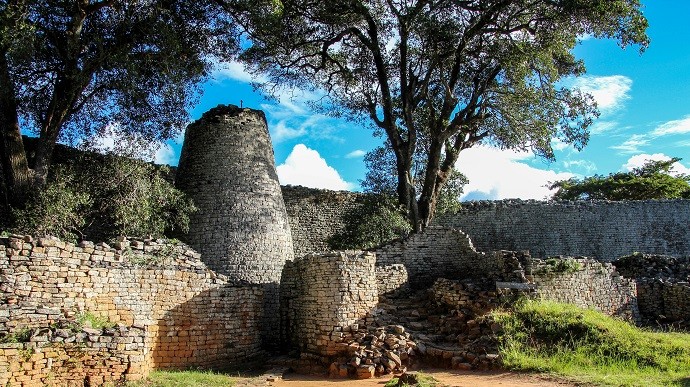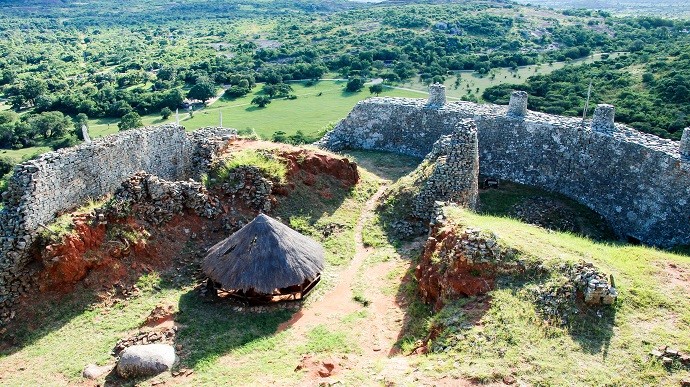
Dr Bongumenzi Nxumalo completed his undergraduate studies at the University of the Witwatersrand, and has been doing research at the University of Pretoria (UP) since 2020.
He chose the University as his research base because he is a UP graduate and because of his interest in human-environmental interactions on the landscape. He recognised the potential rewarding synergies and collaborative interdisciplinary efforts of the University’s Department of Anthropology, Archaeology and Development Studies, and its focus on transformation.
“Apart from my well-established relationship with UP, the main reason for joining UP was centred on representation,” Dr Nxumalo says. “This is based on my engagements with the Department of Anthropology, Archaeology and Development Studies. In terms of transformation and other aspects of equity and diversity, the department engages staff from diverse backgrounds, and I was happy to join a division with this mentality.
“This is important to me,” he adds, “because a number of black students have approached me, indicating a strong interest in the discipline but finding it hard to become involved in it because there are not many staff and students who look like them (and who potentially share similar experiences). Perhaps this relates to the absence of black archaeologists in South Africa – that really needs to change. I am a staunch supporter of representation or diversity and other aspects of equity, since we are grappling with decolonisation and calls for the representation of non-European thinkers in the curriculum.”
Dr Nxumalo’s research focuses on the role of hydrological changes and the demise of southern Africa’s earliest state societies. For example, the rise and demise of Mapungubwe have long been linked to significant climate changes: increased rainfall would have supported intensive agro-pastoral activities and demographic growth, later declining due to the onset of drier conditions. Accordingly, during the Little Ice Age (1300 – 1850 AD), a drier and cooler climate resulted in environmental deterioration, ultimately leading to the abandonment of Mapungubwe. This model is based on archaeological survey records and oral histories, with minimal regional climatic/environmental data. As such, this work has greatly benefitted from geoarchaeological techniques in southern Africa. While the specialisation in geoarchaeology has helped to produce the first local datasets on hydrological changes, optically stimulated luminescence geochronologies and soil micromorphological data in the region – and how these affected past communities – remain unclear.
Building on these results, ongoing research examines hydrological changes and seismic activity in Mapungubwe using resilience to understand how prehistoric and complex societies in sub-Saharan Africa could have interacted with a changing landscape.
The research strategy combines geoarchaeological field surveys; geophysical modelling (seismic modelling); laboratory analyses (geochemistry and micromorphology); the study of historical records and modern climatic data; and predictive modelling using geographic information systems, remote sensing and hydrologic engineering centre river analysis system tools. These systems examine the role of hydrological changes in the decline of early state societies in southern Africa. The resulting models from this research offer quantitative and qualitative novel tools to predict human decisions taken on landscape brought about by changing environmental conditions.
As to why his research matters, Dr Nxumalo says the following: “[My work] characterises the initial phase for developing soil micromorphology records, advanced morphometric analysis and hydrology simulations (geographic information systems, remote sensing and hydrologic engineering centre river analysis modelling) for climate-related issues such as flooding to test and remodel various human-environmental interactions across valley systems in southern Africa. These can help us revise policy development and decision-making processes by informing infrastructural inefficiencies against worsening climatic conditions and sustainable livelihoods.”
Dr Nxumalo is engaged in field projects that focus on geoarchaeological and geophysical land-surface surveys to model societal developments in the Mapungubwe, Shashe-Limpopo Basin (2021). The proposed research tests the role of seismic activity in the rise and decline of the Mapungubwe state in the middle Limpopo valley. In addition, existing geoarchaeological records (soil chemistry and micromorphological analysis) will be integrated to generate a model for changing environmental conditions and cultural developments in the Mapungubwe landscape.
A recent highlight for him was receiving funding from the Cambridge-Africa ALBORADA Research Fund and Cambridge Africa, Cambridge University to establish the first geoarchaeology lab in southern Africa.
Dr Nxumalo says there are many people who have inspired and influenced his work, both within the discipline and outside of it. He is deeply inspired by the role of Africans in the world’s global past.
“The representation of Africa, its events and material record were told by non-Africans, which has often led to a negative portrayal and misconceptions of Africa,” he says. “As such, I draw my aspirations from African philosophy, which attempts to define or interpret African identity and culture from the point of view of indigenous Africans and their descendants. The founding fathers of Pan-Africanist thought inspire me greatly, such as Prof Akinwande Soyinka, Kwame Nkrumah, Robert Sobukwe and Ngũgĩ wa Thiong’o, all of whom give voice to African thinkers in the curriculum.”
He adds that he is also influenced by several scholars, such as Prof Webber Ndoro, Gilbert Pwiti, Prof Innocent Pikirayi and Dr Ndukuyakhe Ndlovu.
“All are non-European pioneers of modern archaeological research in southern Africa,” he says. “Internationally, I am inspired by Prof Charles French and Dr Federica Sulas of Cambridge University; they have shaped my journey in geoarchaeology. As one of the very new black African geoarchaeologists in South Africa, it is through this background that my interest in archaeology grew, with the realisation that people like me could study and write about the contributions made by our own people.”
Dr Nxumalo hopes to establish the first geoarchaeology laboratory in southern Africa.
He advises school learners or undergraduates who are interested in his field to remember that archaeology is a scarce skill in South Africa, and that it requires intensive reading into different periods that characterise the archaeological record of southern Africa.
“For example, the Early Stone Age, Middle Stone Age, Late Stone Age as well as the Iron Age,” he explains. “The discipline requires adequate passion and drive for answering questions related to people’s history. However, archaeology is not only about studying the bones of people; several subdisciplines can be studied. These include archaeobotany, geoarchaeology, zooarchaeology, bioarchaeology, maritime archaeology, archaeometallurgy and archaeometry.”
As for hobbies and interests, Dr Nxumalo is a huge soccer fan, and regularly plays the sport. He also enjoys being DJ.
“I support Liverpool (English Premier League), Barcelona (Spanish League) and Mamelodi Sundowns (SA Premier Soccer League),” he says. “I am also a serious consumer of Afrotech music.”
 Story
Story
A study involving the University of Pretoria (UP), along with academics from Great Zimbabwe University, University of Cambridge in the UK and Aarhus University in Denmark, has revealed how Great Zimbabwe – the largest city in Southern Africa during the Middle Ages – stored water in dhaka pits to overcome severe water scarcity and drought.
 Gallery
Gallery
Water security is currently among the most significant global challenges for human subsistence and environmental health. UP archeologists have discovered that during the middle ages, the people of Great Zimbabwe developed means to conserve water which could make for effective strategies in terms of water management and conservation today.
Copyright © University of Pretoria 2025. All rights reserved.
Get Social With Us
Download the UP Mobile App